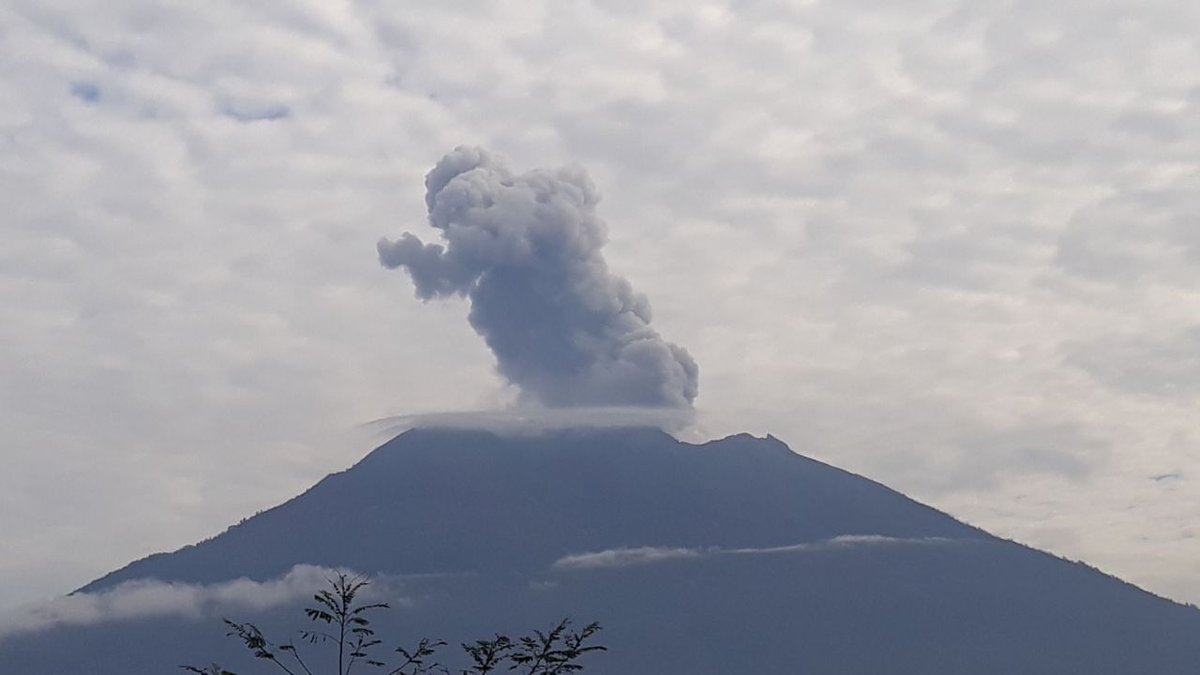Mount Agung erupted again on Friday morning, shooting up a thick cloud of smoke 2,100 meters into the air, but Bali’s airport continues to operate normally.
Volcanology and Geology Disaster Mitigation Agency (PVMBG) senior volcanologist, Devy Kamil, confirmed that the column of smoke, recorded at 7:59am, was indeed an eruption.
“Yes, this was an eruption. The eruption occurred twice. Shortly after the first eruption, a few minutes later, it erupted again. But until now Ngurah Rai Airport is not disturbed. Because the ash is still blowing west,” Kamil said on Friday morning, as quoted by Bali Post.
The Bali volcano’s eruptions became magmatic on Nov. 25, shooting ash up to 3,000 meters high in the sky, after several phreatic, steam-based eruptions the week before.
Telah terjadi erupsi Gunung Agung pada 8/12/2017 pukul 07:59 WITA. Asap berwarna kelabu tebal, bertekanan sedang dan tinggi 2100 meter di atas puncak condong ke arah barat. Status Awas. VONA Orange. Bandara Ngurai Rai Denpasar dan Bandara Lombok beroperasi normal. #Balitourist pic.twitter.com/VRnlXDwXDI
— Sutopo Purwo Nugroho (@Sutopo_BNPB) December 8, 2017
“So it’s not a phreatic eruption. This is a magmatic eruption, but it’s still small scale,” he said.
And while the eruptions we witnessed this morning are considered small scale, experts still fear Mount Agung will eventually blow its top in a larger scale eruption.
According to Kamil, Agung’s eruptions this morning are “fluctuations.” Fluctuations like this are expected right now, because the volcano is still entering an eruptive phase, says Kamil.
So an eruption like the two this morning can happen at anytime, warns the volcanologist.
“Therefore, we ask residents to always standby, especially in the case of rain. Because if there is rain, there can be lahars,” Kamil cautioned.
Lahars, or so-called cold lava flows, are mud flows containing ash, mud, and other debris that can be extremely dangerous and destructive.
Mount Agung has been on the highest alert level Nov. 27, after previously rumbling back to life in September, when it was on the highest alert from Sept. 22 to Oct. 29. The airport was closed for nearly three days from the morning of Nov. 27 until the afternoon of Nov. 29 when volcanic ash blew into the Bali airport’s flight path, but was allowed to reopen once winds shifted and carried ash away from the airport.
The highest alert level calls for an exclusion zone of 10 kilometers from the volcano’s crater, which has forced the evacuation of tens of thousands Balinese villagers.





Reader Interactions